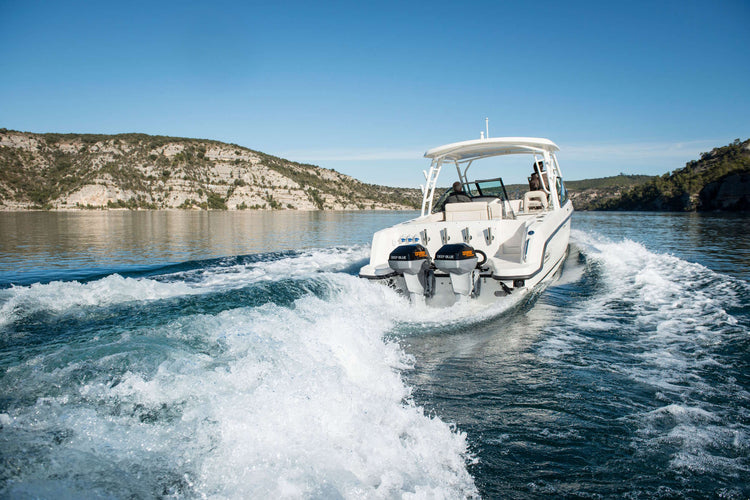
FAQS
Where are Torqeedo electric motors made?
Torqeedo electric boat engines are designed and made in a purpose built production facility in Munich, Germany.
What size electric outboard motor do I need?
This all depends on the size of your boat, boat purpose, power needs and whether you need tiller control or remote steering. Please refer to the guide below and each product page for more information on performance and accessories:
- Up to 1.5 tonnes: Travel 1103C
- Up to 3 tonnes: Cruise 3.0
- Up to 6 tonnes: Cruise 6.0
- Up to 10 tonnes: Cruise 10.0
- Up to 12 tonnes: Cruise 12.0
- Up to 25 tonnes: Deep Blue 25
- Up to 50 tonnes: Deep Blue 50
What size shaft length do I need for my boat?
In order to determine the right shaft length for your boat you will need to measure the top of the boat transom to the bottom of the boat. Once you have this measurement you can check each product for the shaft size variations.
How long will an electric boat engine run?
This all depends on the battery size, speed, type of boat, load, propeller and conditions. You can find an estimated range tested with different batteries on different boats in each product page under the range tab.
How do you calculate performance (kWs vs HP)?
Our focus on optimising propulsive power and our use of the latest technologies means Torqeedo has the highest overall efficiency on the market. That is, every Torqeedo drive converts its available battery power to propulsive power better than any other outboard. This is very important for electric drives because it means more power and range from limited battery capacity.
Electric motors can achieve the same propulsive power as combustion engines with significantly lower shaft power. The reason lies in the different torque curves of electric motors and petrol engines. While the torque curve of combustion engines features a prominent peak, with maximum torque being available only over a limited engine speed range, electric motors feature a much flatter torque curve with ample torque available at any engine speed.
This characteristic allows them to run substantially higher efficiency propellers – even in lower performance classes – than combustion engines. Propeller efficiencies in the lower horsepower class can vary by a factor of 3 between petrol outboards and Torqeedo electric outboards.
To make the comparison easy for boaters used to shaft power ratings of petrol outboards, we always compare the actual propulsive power of our outboards versus petrol outboards. On the following pages, a Torqeedo outboard specified as a "3 HP equivalent" provides the same propulsive power as a 3 HP petrol outboard – even though its shaft power and input power may be substantially lower.
How do I charge an electric boat engine?
Our Torqeedo lithium batteries can be charged via standard electrical outlets or our range of chargers, fast chargers and solar chargers available here
How do I store the battery for longer life-span?
To keep your battery in its best shape, we recommend you store it in a cool dry place.
The service life of a lithium battery is determined by time and, to a lesser extent, the number of charging cycles. The capacity loss over time is about 2-4% per year at an ambient temperature of 25°C. The aging process is accelerated if the battery is exposed to high temperatures. Lithium batteries can be used even when it is hot, but should be stored at a cooler temperature when possible.
Can I use a third-party battery?
Yes, although it is not recommended. Some lower quality batteries can damage the motor and in some cases may void your warranty. For best performance you can find our range of high quality lithium batteries here
I need some technical advice where do I go?
Please contact the retailer where you purchased the product from. Alternatively, if you purchased directly through Torqeedo please call 1800 069 469.
